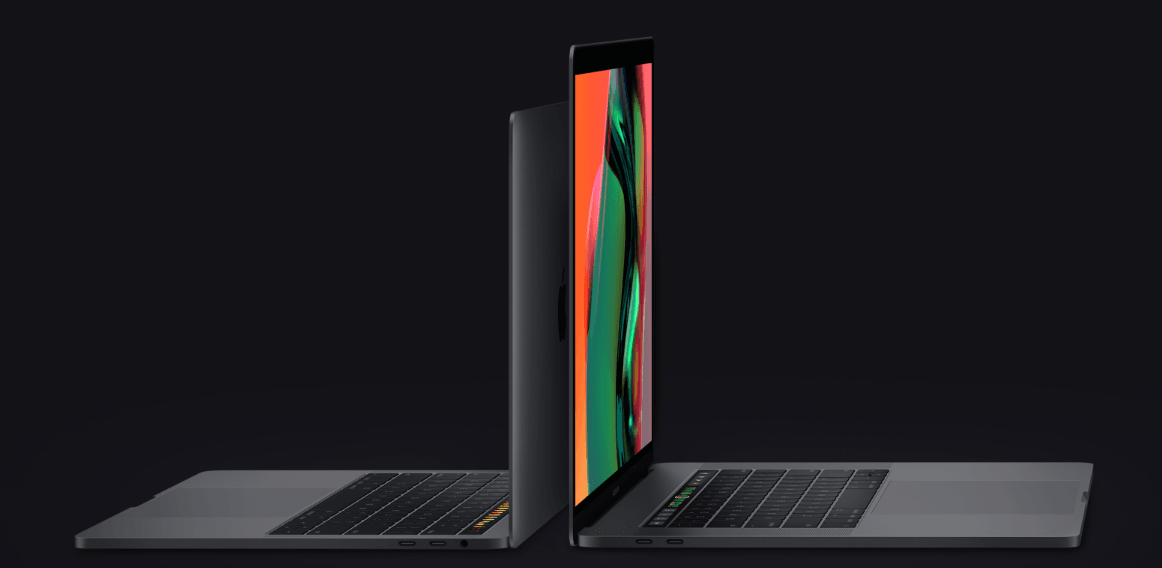
Last week, Apple surprised its fans by introducing updated 13-inch and 15-inch MacBook Pro models with Touch Bar that take performance to a whole new level. The tech giant has started shipping the new Macs. Industry experts and tech reviewers have picked the most powerful MacBook Pros ever and put them to test.
Popular YouTuber Dave Lee got the top of the line 15-inch MacBook Pro with Intel’s Core i9 processor. The hexa-core processor has a clock speed of 2.9GHz with Turbo Boost up to an insane 4.8GHz. It is available as a $300 premium option on the 2018 15-inch MacBook Pro.
Thermal design slows down the 15-inch MacBook Pro
Dave Lee points out that the poor thermal design of the latest MacBook Pro fails to properly cool the Core i9 processor. As a result, it throttles the performance of the chip to prevent any damage to the laptop. The Core i9 fails to reach its peak performance due to thermal issues.
In his YouTube video, Lee shows the 2018 15-inch MacBook Pro running Adobe Premiere Pro. It runs smoothly for a short time before the throttling kicks in. The average clock speed during high-intensity work was just 2.2GHz, far below the advertised speed of 2.9GHz. The YouTuber blamed the Mac’s heatsink and fan module that cool the system for hurting its performance.
To make his point, Lee compared the Adobe Premiere Pro render times for the new 15-inch MacBook Pro with Core i9 against last year’s 15-inch MacBook Pro with a Core i7 chip. Surprisingly, the last year’s model was able to render the 5K clip in 35 minutes, beating the latest model’s 39 minutes. It’s worth pointing out that the Premiere Pro software is not optimized for macOS, but the difference between the two models can’t be ignored.
The YouTuber didn’t stop there. When he ran the same test by placing the 2018 MacBook Pro in a freezer, it was able to finish the render in just 27 minutes. It clearly shows that something is not right with the new Mac’s thermal solution. Anyway, both the MacBook Pros were beaten by Gigabyte’s Aero 15X running Windows 10. The Aero 15X rendered the same 5K clip in just about 7 minutes, probably because the Adobe Premiere Pro is well-optimized for Windows.
Dave Lee said, “This CPU is an unlocked, overclockable chip but all of that CPU potential is wasted inside this chassis — or more so the thermal solution that’s inside here.” If the device can’t even maintain its base clock speed, there is no point talking about Turbo Boost.
It’s worth pointing out that thermal throttling is pretty common in laptops. It’s not something unique to the new MacBook Pro. However, Dave Lee is disappointed with the degree of thermal throttling on the 2018 15-inch MacBook Pro. This is just one test on one device, so it’s difficult to say how widespread the issue is. But Apple is unlikely to ship such an expensive product without thoroughly testing every aspect of its performance. Additional testing in the near future will shed more light on the issue.
2018 MacBook Pros score well on Geekbench
The latest Macs performance incredibly well in benchmark tests. The Geekbench scores show that the 2018 MacBook Pro models bring the biggest annual performance gains since 2011. Apple promises up to 70% faster performance for the 15-inch model and double the performance for the 13-inch model. According to Geekbench, the 15-inch MacBook Pro with Core i9 chip scored 22,439 points in multi-core tests, up 44% compared to last year’s 15-inch model.
The 13-inch MacBook Pro with quad-core Intel Core i7 chip received a multi-core score of 17,557, representing an 84% improvement over its predecessor with Core i7 chip. The better performance is mainly due to additional cores, the switch to DDR4 memory, and higher Turbo Boost frequencies. However, the single-core performance shows only up to 11% improvement for the 13-inch model and up to 15% for the 15-inch model.
Geekbench founder John Poole said the initial Geekbench scores tell only part of the story. On the new Macs, the macOS software runs several setup tasks in the background, which could temporarily hurt performance. When the background tasks are complete in a few days, we will see a much better performance on new models.
Do the third-gen keyboards repel dust?
The new MacBook Pros also come with improved third-generation keyboards that are quieter than before. However, Apple claims the new keyboards don’t fix the butterfly keyboard issue that users of older models have been complaining about. The problem with the keyboard is that even tiny particles of dust or debris could render it inoperable.
Fortunately, the third-gen keyboards have thin silicone slip under every key to repel dust, which should minimize the chances of dust particles causing the keyboard to malfunction. Apple is currently offering a free service program for owners of older MacBooks affected by the issue.





